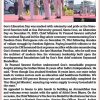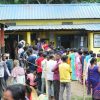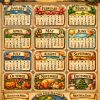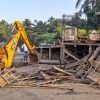Goa is abuzz with excitement as vintage bike and car owners, users, collectors and fans are decking […]
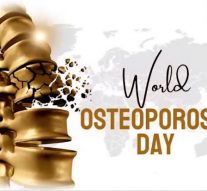
PREVENT OSTEOPOROSIS: Building the CALCIUM Fortress
Uncategorized October 31, 2025By Dr. Amit Dias
October 20 is observed as World Osteoporosis Day. On this occasion, Dr Amit Dias highlights the important message that osteoporosis is preventable! The 2025 theme — “It’s Unacceptable!”– highlights the urgent global need to bridge the gaps in treatment and prevention. Read on to fortify your future and your bones with calcium.
MINOR stumbles can turn into life-altering fractures. Yet, the story of osteoporosis need not be one of decline, but of empowerment. World Osteoporosis Day urges us to break the silence — not our bones — by embracing knowledge and lifestyle changes that can protect us for life. Ignoring our bone health is unacceptable.
The Silent Epidemic: Understanding Osteoporosis
WE often hear the saying, “True strength lies within.” In the case of our bones, this couldn’t be more accurate. Our bones form the very framework that supports us through every step of life — yet we tend to overlook bone health simply because we can’t see it. Osteoporosis is a silent condition where bones become weak and brittle due to a gradual loss of bone mass and structural strength. It often goes unnoticed until a fracture occurs, turning routine activities into potential hazards. The early stage, known as osteopenia, serves as a crucial warning sign — a chance to take timely action through nutrition, exercise, and medical guidance to prevent further bone loss and protect our strength from within.
The Global Burden
ACCORDING to the World Health Organization (WHO), osteoporosis is one of the most common metabolic bone diseases globally. It affects nearly 200 million women worldwide. Approximately one in two women and one in four men over 50 years of age will experience an osteoporosis-related fracture. With India’s aging population, this silent epidemic is becoming a major public health concern.
Who is at Risk?
While osteoporosis can affect anyone, some factors increase vulnerability:
Gender: Women are more likely to be affected, especially after menopause due to estrogen loss.
Age: Bone density naturally declines with age.
Family History: A parent with osteoporosis raises your risk.
Body Frame Size: Smaller, thinner bones are more prone to weakening.
Ethnicity: People of Asian, Latino, and Caucasian descent are statistically at higher risk.
Chronic Conditions: Diseases like rheumatoid arthritis, celiac disease, hyperthyroidism, and certain cancers can increase bone loss.
Building a CALCIUM Fortress: The Prevention Blueprint
THE best defense against osteoporosis is prevention. By focusing on diet, exercise, and healthy habits, you can significantly slow down bone loss and even strengthen your bones.
Dietary Strength: Calcium & Vitamin D
CALCIUM forms the backbone of bone health. Include dairy products, leafy greens like spinach and kale, beans, and fortified cereals. Vitamin D is essential for calcium absorption — sunlight helps, but supplementation may be needed, especially for those with limited exposure. Always consult your physician before starting supplements. Due to our lifestyle changes, indoor habits, we see a lot of patients with very low levels of Vitamin D in our clinics.
Exercise: Move to Strengthen
BONES respond positively to physical stress. Weight-bearing activities stimulate new bone formation, improve balance, and reduce the risk of falls. Try strength training, walking, dancing, or yoga. Avoid high-impact or twisting movements if you already have osteoporosis.
Lifestyle Choices: Quit the Bone Enemies
WHILE you keep track of what is good for you, you should also be aware of what is bad for your bone health. Smoking and excessive alcohol consumption accelerate bone loss. Limit caffeine and salt intake, as both can deplete calcium. Review your medications with your doctor — long-term steroid use and certain other drugs can affect bone density.
Fall Prevention: A Smart Defense
FOR those with weaker bones, simple safety measures at home — like good lighting, non-slip mats, and grab bars — can prevent major injuries. Consult a physiotherapist or occupational therapist to improve balance and muscle strength. We see a similar pattern of falls in our clinic and many of them are preventable.
Your Bone Health Checklist: When to Talk to a Doctor
OSTEOPOROSIS often shows no symptoms until a fracture occurs. Warning signs include back pain, height loss, or stooped posture. A Bone Mineral Density (BMD) test, known as a DEXA scan, helps assess risk. It’s recommended for all women aged 65+, and younger women with risk factors. The test yields a T-score, which indicates whether your bones are normal, osteopenic, or osteoporotic.
Remember CALCIUM
USE this simple formula to stronger bones and prevention of osteoporosis.
C – Calcium & Control: Ensure enough dietary calcium and control risky habits.
A – Awareness & Avoidance: Know your risks and avoid harmful exercises.
L – Lifestyle & Loads: Engage in weight-bearing exercise and a balanced lifestyle.
C – Consult a Clinician: Get regular check-ups and DEXA scans.
I – Improve Intake: Supplement Vitamin D if needed.
U – Understand your risk and stay unbreakable. Maintain a nutritious, consistent diet.
M – Medication Monitoring: Discuss all long-term medications with your doctor.
Stay strong, stay steady — your bones will thank you!
